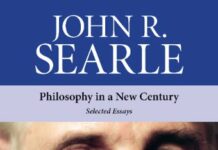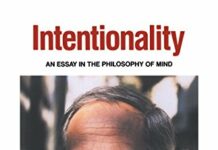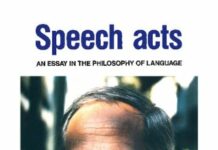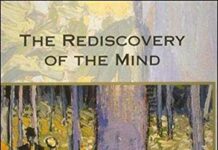
Ebook Info
- Published: 2002
- Number of pages: 280 pages
- Format: PDF
- File Size: 1.02 MB
- Authors: John R. Searle
Description
One of the most important and influential philosophers of the last 30 years, John Searle has been concerned throughout his career with a single overarching question: how can we have a unified and theoretically satisfactory account of ourselves and of our relations to other people and to the natural world? In other words, how can we reconcile our common-sense conception of ourselves as conscious, free, mindful, rational agents in a world that we believe comprises brute, unconscious, mindless, meaningless, mute physical particles in fields of force? The essays in this collection are all related to the broad overarching issue that unites the diverse strands of Searle’s work. Gathering in an accessible manner essays available only in relatively obscure books and journals, this collection will be of particular value to professionals and upper-level students in philosophy as well as to Searle’s more extended audience in such fields as psychology and linguistics.
User’s Reviews
Reviews from Amazon users which were colected at the time this book was published on the website:
⭐It is difficult to summarize and critique in a short paragraph all that Searle presents in what is already a succinct and clear argument that requires 264 pages of exposition. In general, his thesis is that we cannot study the nature of consciousness in the same way that scientists study physical phenomena because consciousness is not a physical thing; it is a mental state that, admittedly, has its basis in physical brain processes;but by its very essence consciousness is “self-referential” and subjective. This view does not deny the fact that lower level” brain processes on the synaptic neuronal level causes “higher level” consciousness. Searle posits that consciousness is an “emergent property” caused by the micro elements of the system of which that are themselves features, but it is not merely a manifestation of or a conjunction of those lower level brain functions such as processing sense impressions. This is a case of “the whole being greater than the sum of its parts” in layman’s terms. Searle rejects the reductionist neurobiological stance that consciousness is “just” a response to physical stimuli. This awareness, which we call consciousness, is neither an objective “thing” nor a “metaphysical and inscrutable entity” but rather a natural biological process, which in its essence is not unlike other biological processes such as digestion. (Some would argue that this analogy, which would be supported by reductionist theorists, is spurious in its simplicity. Searle’s own theory of the “underestimation” of available data would bear this out.) While digestion is sub-conscious, consciousness in the brain causes us (or enables us) to examine and manipulate our subjective states. (Unlike digestion, we would point out.) This results in the formation of “beliefs” about the ontological nature of being. Beliefs, the result of a process inherent in consciousness, are not in the same category on knowledge as measurable scientific data. Thoughts are not “things” except to the extent that abstract ideas are things, albeit non-physical things. People have become confused by the concept of the mind/body dualism introduced into scientific thought in the seventeenth century. Semantic confusion only complicates the matter further. Fact is, “body” is a physical object, while “mind” is an abstract concept. Searle does not reject the possibility of the existence of thought-objects, or even “soul” out of hand. Instead, he states that unless and until “soul” can be observed, objectified, and measured it must remain a concept, a “thought object” rather than a physical object as is postulated by theologians and New Age philosophers with their “thoughts are things” credo. In this reviewer’s experience the ubiquity of paranormal phenomena does hint at the existence of “thought objects, perhaps in the nature of brain waves projected outside of the brain. Searle does not share this conviction as he presents his thesis in the book. To posit the existence of “soul” or physical “thought-objects” with our limited knowledge of ontology is to misrepresent the nature of the physical world as we know it through our senses. Any other “knowledge” must remain theoretical. In arriving at his conclusions Searle reviews the theories of consciousness of many reputable scientists and philosophers, then reduces them to tautologies or reveals the illogic of their conclusions by employing simple examples from real life and the reductive technique of argument ad absurdum. Searle expounds his thesis in a series of essays written in a clear and straightforward style that demystifies the typical jargon of philosophy that is often decipherable only by specialists. Still, this is a dense read that will leave you underlining and annotating every other sentence as “incisive.” This book will certainly help you to unravel the nature of the working of your own mind and to sort out fact from fiction in your personal world view.
⭐Published in 2002 by Cambridge University Press `Consciousness and Language’ is a collection of essays by John Searle. Searle is a long-time professor of philosophy at University of California Berkley and a pre-eminent contemporary American philosopher.Potential purchasers are advised to check the on-line table of contents prior to buying given that all but one of these essays have been previously published (the exception being the response to Kripke’s sceptical private language argument). That said, the text provides a handy compilation of disparate papers which would otherwise be difficult to track down. The essays range across Searle’s major areas of interest; language, society and the mind. While there are many excellent papers in the collection, I especially enjoyed the responses to Quine and Kripke. The writing as one would expect is characterized by Searle’s trademark clarity and rigourThis text would make an excellent addition to the library of any Searle fan. Readers that enjoy Searle may also enjoy some of courses available through itunes/itunes u.
⭐Searle has collected a large and important variety of articles in this text, which spans several years of thinking on issues such as: the nature of consciousness, free will, the mind-body problem, rationality, and collective action. Only one article on Kripke’s meaning skepticism has been not previously published.The vigor and force of questions that Searle queries regarding how it is possible to reconcile our intuitions about having a ‘free will’ in a world of physical laws and (all things being equal) deterministic principles is important and fundamental. I highly recommend this volume, which conveniently assembles previous articles, and it makes clear Searle’s position on these problems. Indeed, it makes clear exactly how difficult and challenging philosophical problems and questions are–and why philosophers stay awake at nights thinking about them…and why no easy solution is forthcoming in philosophy or science…The articles are written in Searle’s usual style–with problem solving on his mind–clearly stating the problem to be addressed and evaluated–a model of philosophical prose…And I might add…the cover photograph of Searle is splendid–him in a tweed coat…autumn leaves…just in case you’ve wondered what a suave academic is supposed to look like nowdays…
⭐I read book previously. Now I am studying it and writing my comment on it since this is a “keeper”.
Keywords
Free Download Consciousness and Language in PDF format
Consciousness and Language PDF Free Download
Download Consciousness and Language 2002 PDF Free
Consciousness and Language 2002 PDF Free Download
Download Consciousness and Language PDF
Free Download Ebook Consciousness and Language





